Subclass Elasmobranchii Scientific name Potamotrygonidae Rank Family | Phylum Chordata Higher classification Stingray | |
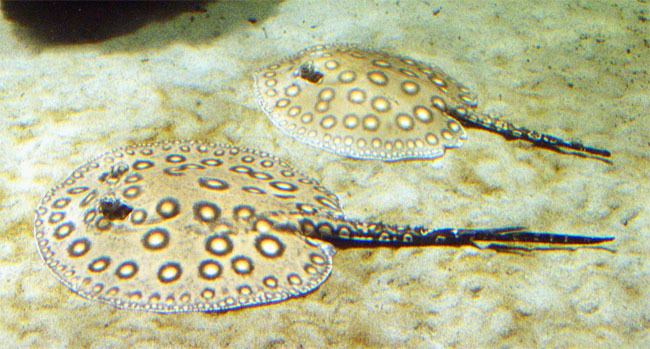 | ||
Similar Potamotrygon, Batoids, Ocellate river sting, Stingray, Stingrays | ||
River stingrays or freshwater stingrays are Neotropical freshwater fishes of the Potamotrygonidae family in the order Myliobatiformes, one of the four orders of batoids, cartilaginous fishes related to sharks. River stingrays are found in rivers in South America draining into the Caribbean Sea and the Atlantic Ocean as far south as the River Plate in Argentina (freshwater stingrays in Africa, Asia and Australia are in another family, Dasyatidae). Each river system has its own endemic stingrays. A single marine genus, Styracura, of the tropical West Atlantic and East Pacific are also part of Potamotrygonidae. They are generally brownish, greyish or black, often with a mottled or speckled pattern, have disc widths ranging from 25 to 200 centimetres (0.8–6.6 ft) and venomous tail stingers. There are more than thirty species in five genera.
Contents
- Freshwater polka dot stingray potamotrygonidae
- Distribution and taxonomy
- Characteristics
- Species
- References
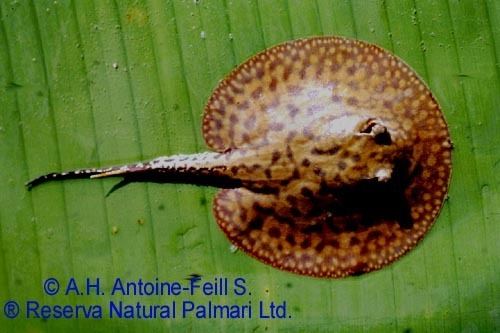
Freshwater polka dot stingray potamotrygonidae
Distribution and taxonomy
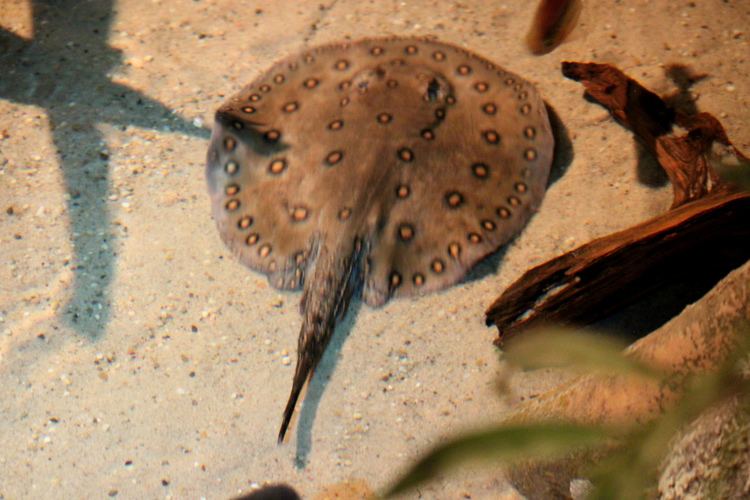
They are native to northern, central and eastern South America, living in rivers that drain into the Caribbean, and into the Atlantic as far south as the Río de la Plata in Argentina. Generally, each species is native to a single river basin, and the greatest species richness can be found in the Amazon, especially the Rio Negro, Tapajós, and Tocantins basins (each home to 8–10 species).
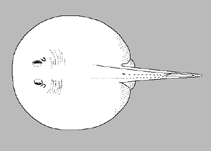
In 2016, two marine species formerly included in Himantura were found to belong in Potamotrygonidae, and moved to their own genus Styracura. These are S. schmardae from the tropical West Atlantic, including the Caribbean, and S. pacifica from the tropical East Pacific, including the Galápagos.
Characteristics
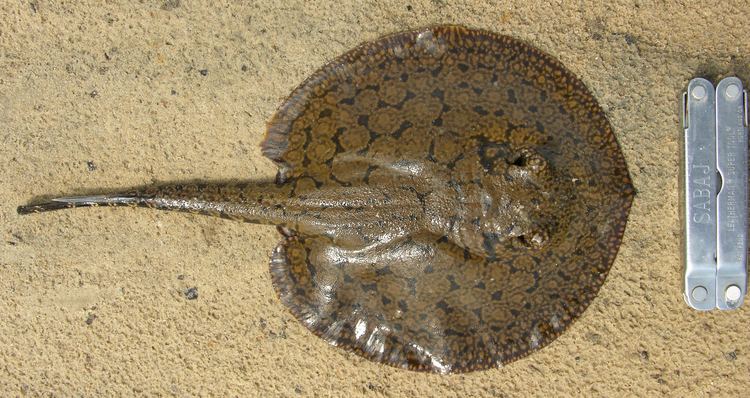
River stingrays are almost circular in shape, and range in size from Plesiotrygon nana, which reaches 25 cm (10 in) in disc width, to the chupare stingray (S. schmardae), which grows up to 2 m (6.6 ft) in disc width. The latter is one of only two marine species in this family (the other is S. pacifica). The largest freshwater species in this family is the short-tailed river stingray (P. brachyura), which grows up to about 1.5 m (5 ft) in disc width. The upper surface is covered with denticles (sharp tooth-like scales). Most species are brownish or greyish and often have distinctive spotted or mottled patterns, but a few species are largely blackish with contrasting pale spots.
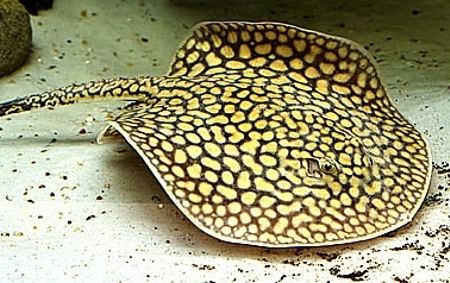
They have a venomous stinger on the tail, and are some of the most feared freshwater fishes in the Neotropical region because of the injuries they cause. However, they are not dangerous unless stepped on or otherwise threatened.
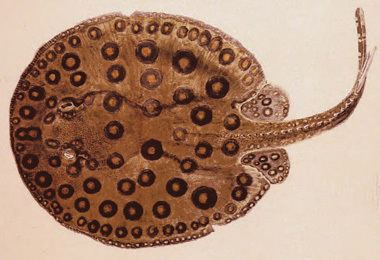
River stingrays are the only family of batoids mostly restricted to fresh water habitats. While there are true freshwater species in the family Dasyatidae, for example Himantura chaophraya, the majority of species in this family are saltwater fish.
Species
The taxonomy of the river stingrays is complex and undescribed species remain.
Subfamily Styracurinae
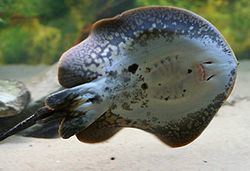
Subfamily Potamotrygoninae
